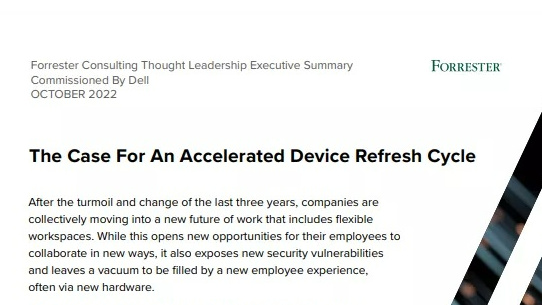The Dos and Don’ts of collaboration
We outline collaboration best practices and potential pitfalls of business collaboration


Collaboration is important in any business, but it's important to make sure that you approach it the right way. Investing in collaboration can be costly and time-consuming, but it can also pay dividends - the main thing is ensuring that you get your collaboration initiatives right the first time.
With that in mind, here are the essential dos and don'ts of how to make your business more collaborative.
DO...
Contribute as much as possible
Collaboration involves a substantial flattening of traditional management structures. Rather than having a rigid hierarchy with one leader at the top giving orders, collaborative methods involve everyone sharing their ideas, suggestions and feedback, with one member leading and coordinating the discussion.
However, this only works if everyone contributes as much as possible. Otherwise, the team or project's overall direction still ends up being dominated by a small group of individuals. If you've got an idea, don't just keep it to yourself for fear that it'll be dismissed: collaboration is as much about learning from 'wrong' ideas as it from implementing 'right' ones.
Listen to people's ideas
By the same token, people need to feel like their comments and suggestions are welcome within a collaborative environment - otherwise, they just won't share everything. This will mean that some managers will have to change the way they operate and give everyone an equal chance to steer the boat, rather than simply governing by diktat.
It also means that staff will need to play nicely with each other. There's nothing more disheartening than having a genuine suggestion laughed at by your colleagues, so remember to give every idea an equal chance - even if you think it sounds ridiculous.
Be open to new ways of working
It can be tempting to set up tools like Slack and Google Docs and think you've got this collaboration thing sussed but collaboration is a journey, not a destination. You should ensure that you're always on the lookout for new ways to help you communicate better as a business.
Sign up today and you will receive a free copy of our Future Focus 2025 report - the leading guidance on AI, cybersecurity and other IT challenges as per 700+ senior executives
Of course, this doesn't mean that you need to revamp your entire toolset every time a new, shiny collaboration platform comes along, but organisations should always be open to the idea of switching things up. This can be a large, IT-led change, or it can be as simple as cutting back on the number of large meetings you have in favour of smaller, more regular stand-ups.
Be collaborative everywhere you can be
Remember, collaboration isn't just a tool; it's a mindset. Collaborating in business tasks and projects is all very well, but try and extend it to other elements of your working life, too. Use messaging platforms like Slack to chat to have interdepartmental chats over lunch, for example, or use agile methodologies to plan the office party.
This might sound rather twee and pointless, but the best way to ensure that the tools, processes and principles of enterprise collaboration become truly embedded into your organisation is repetition. Use them as much as possible, and they'll soon become a normal part of your workday.
Get out of the office
Improving your business' collaboration means that you and your team can be flexible - so why not make the most of it? Take advantage of the flexibility offered by cloud tools, business IM and more portable devices by getting out of the office more. Work from home, or spend an afternoon in the park, for example.
Collaboration doesn't just enable you to work in new environments, it's also helped by it, too. Spending more time outdoors, or away from stark office conditions can be hugely beneficial for employees' mental health, and can lead to happier and more productive staff.
Play to your team's strengths
It's important to remember that each member of your team is an individual, with their own skills and preferred tasks. Successful collaboration involves the most effective application of those skills for each challenge not only is it fundamental to creating results, but the feeling of being part of a cohesive machine works wonders for team morale.
Not everyone will be suited for every task; placing a person in a role that they're not suited can at best produce mediocre results and at worst a demoralised team member that feels they're unable to contribute. That's not to say people shouldn't be pushed outside of their comfort zone where appropriate, as this too can be incredibly motivating if managed correctly, it just requires a delicate balance.
DON'T...
Be afraid to criticise
Collaboration is an inherently agile way of working, and one of the core tenets of business agility is 'fail fast'. If you think a particular practise or process isn't working, don't be afraid to speak up and say so - that way, the team can examine it, address any concerns, and adapt the process if need be.
Building a culture of openness and honesty is one of the most important parts of collaborative working, but it can't flourish if people are too scared of recriminations to criticise something they think is wrong. That said, team members should also ensure that any criticism they have is constructive in nature.
Default back to old processes
Learning new things is always hard and when you're part of a busy department, the choice between spending time learning how to do things a new way or simply doing it how you've always done it to save time seems like a no-brainer. This is a mistake, though.
The longer you leave it to learn how to use new collaboration tools, the harder it will be when you do eventually need to. This can sometimes lead to skill gaps within the workplace, as digital natives adapt quickly to new technologies, while less confident staff put it off - one reason why strong training programmes are so important.
Just rely on technology
Technology can go a long way towards helping your organisation collaborate effectively, but it's not a magic wand. Businesses will still have to do a lot of legwork - outside of the deployment of new collaboration technology - in order to make sure it's a success.
Building the right culture is a hugely important and often-overlooked part of business collaboration, and most of it involves no technology at all. Instead, it's focused around fostering an atmosphere of openness and communication within the organisation, ensuring not employees have not just the means to collaborate, but also the desire.
Refuse to be flexible
Effective collaboration goes hand in hand with effective communication and in order to achieve the latter you need to understand how your team prefers to engage with one another. It's important to give team members the freedom to operate independently within the boundaries of the task, rather than interrupt them every five minutes for a status update.
Which leads us nicely into our next tip, and that is don't...
Overdo it on face to face meetings
It's important to meet with your team on a regular basis, but that doesn't always require a face to face, sitdown meeting. There's nothing more frustrating than being forced to attend a meeting that interrupts your workflow, only to find that the message could have been conveyed by a simple email.
Face to face meetings are essential, given that it's far easier to share ideas as a group in person rather than over email or instant messaging. However, you're taking a person away from their work so there needs to be a point to it. Don't use them for something as simple as status updates instead, create strict agendas for discussion built around a set time frame. You want each team member to leave with new and clear objectives.
Stop thinking about tomorrow
A prepared business is a safe business, and that applies to collaboration as much as it does to anything else. Experts predict that the business and labour markets are going to be shaken by several key upheavals over the next few years, and you need to make sure that your organisation is future-proofed against them.
For example, are your collaboration systems able to cope with the large influx of short-term freelance workers brought in by the so-called 'gig economy'? What about the fact that millennials now view the option of flexible working as a key differentiator when job-hunting - does your company support that?
Forget to make a plan
It's one of the most fundamental aspects of making any operational change, but it's even more important when it comes to collaboration: you need to make sure that you have a plan. When looking at collaboration tools, make sure that you know your business challenges, what your ideal outcomes, and how each tool or process will help you solve them.
By making sure that you've done your research, you won't end up deploying a tool like Slack, only to realise that Microsoft Teams would have been better suited to your needs.
While this is by no means a definitive list of how to go about building a truly collaborative organisation, following these tips will give you an excellent starting point, and put you in a good position to build from.
It's also a good refresher for businesses which have already started on their collaboration journey. After all, it never hurts to brush up on the essentials.
Dale Walker is a contributor specializing in cybersecurity, data protection, and IT regulations. He was the former managing editor at ITPro, as well as its sibling sites CloudPro and ChannelPro. He spent a number of years reporting for ITPro from numerous domestic and international events, including IBM, Red Hat, Google, and has been a regular reporter for Microsoft's various yearly showcases, including Ignite.
-
 TPUs: Google's home advantage
TPUs: Google's home advantageITPro Podcast How does TPU v7 stack up against Nvidia's latest chips – and can Google scale AI using only its own supply?
-
 Microsoft Excel is still alive and kicking at 40
Microsoft Excel is still alive and kicking at 40News A recent survey found Gen Z and Millennial finance professionals have a strong “emotional attachment” to Microsoft Excel
-
 'Digital hide-and-seek': Workers are wasting hundreds of hours a year sourcing the information they need to carry out their role
'Digital hide-and-seek': Workers are wasting hundreds of hours a year sourcing the information they need to carry out their roleNews Knowledge workers globally are wasting a quarter of their working week tracking down information, new research from Atlassian has revealed.
-
 Untethered: How CIOs and CISOs are paving the way for the new hybrid workforce
Untethered: How CIOs and CISOs are paving the way for the new hybrid workforceWhitepaper Effective techniques to transition from exposed legacy infrastructure to an effective zero trust strategy
-
 Unlocking the power of your digital services
Unlocking the power of your digital servicesSponsored Businesses have invested significant cash into technology since COVID-19, but are they really getting their money's worth?
-
 Delivering fast and secure digital experiences for the modern hybrid workforce
Delivering fast and secure digital experiences for the modern hybrid workforceWhitepaper A new approach to digital experience monitoring that can monitor the health of all systems
-
 Collaboration is the glue that holds your business together
Collaboration is the glue that holds your business togetherSPONSORED A combination of productivity tools and cloud telephony can enable the best from your workforce
-
 The future of work and the forgotten workforce
The future of work and the forgotten workforcewhitepaper How to deploy a mobile-first strategy so no one gets left behind
-
 The case for an accelerated device refresh cycle
The case for an accelerated device refresh cycleWhitepaper Achieving a more cost-effective device lifecycle overall
-
 Employees are choosing how they work
Employees are choosing how they workWhitepaper And with the right secure digital strategy, this could be a great thing for your business: today and far into the future